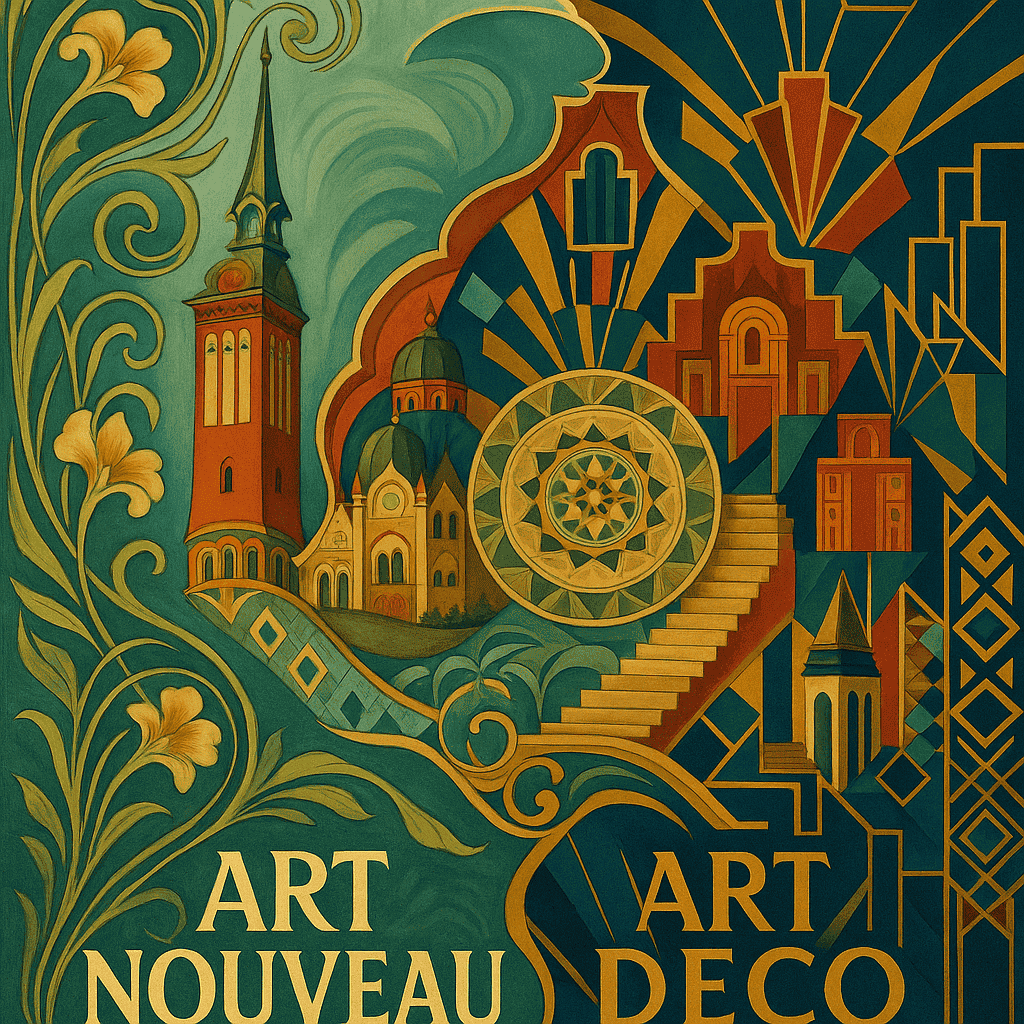When we speak about decorative styles from the turn of the 19th to 20th century, two giants emerge — Art Nouveau and Art Deco. These styles are often confused, yet they represent completely different artistic philosophies. One is a hymn to nature, dreams, and utopia. The other is a manifesto of speed, geometry, and confidence in a technocratic future.
You can listen to a podcast on this topic in our Telegram channel.
Historical Roots: From Nature to Progress
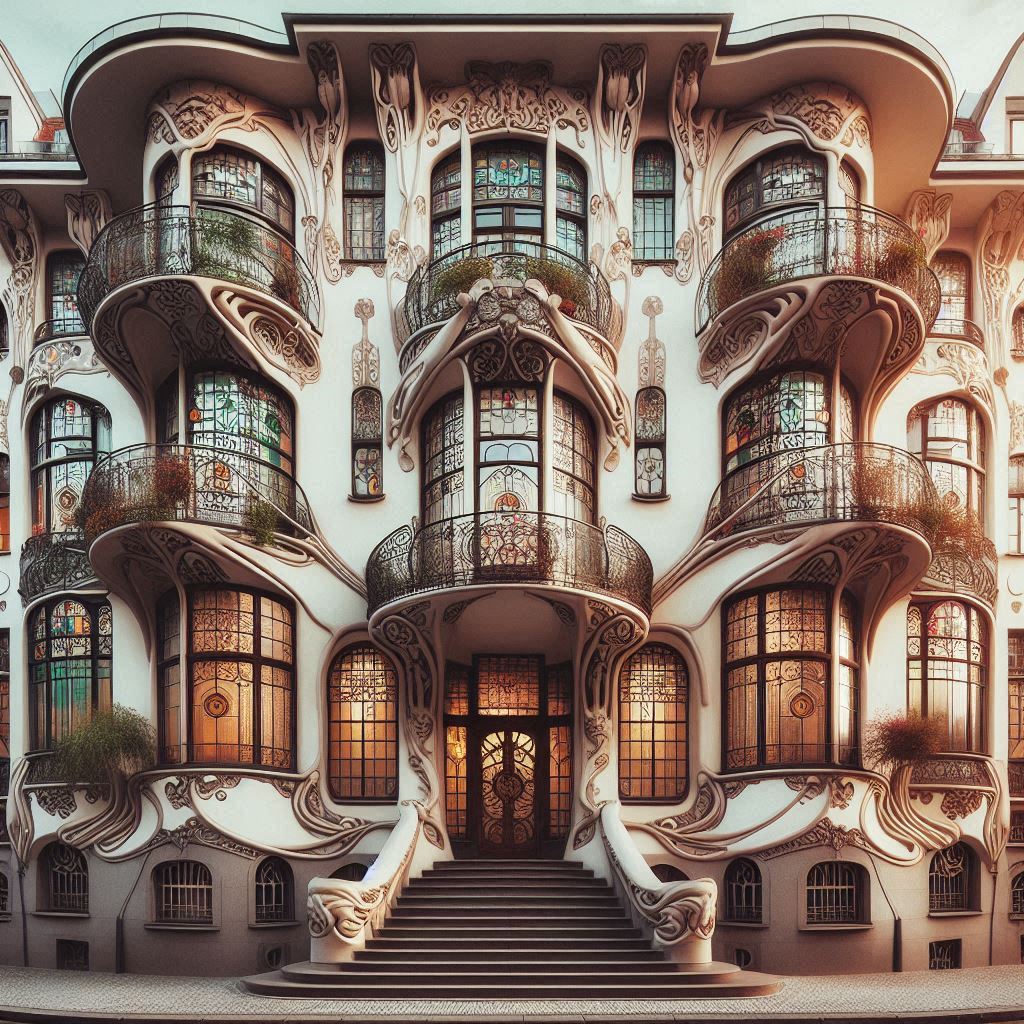
Art Nouveau, born in the late 1880s, aimed to unify art and life. It was “art for everyone,” an attempt to bring beauty into everyday objects: buildings, furniture, shop signs, jewelry.
Everything was inspired by nature: curved lines, floral patterns, hand-crafted details, and soft asymmetry.
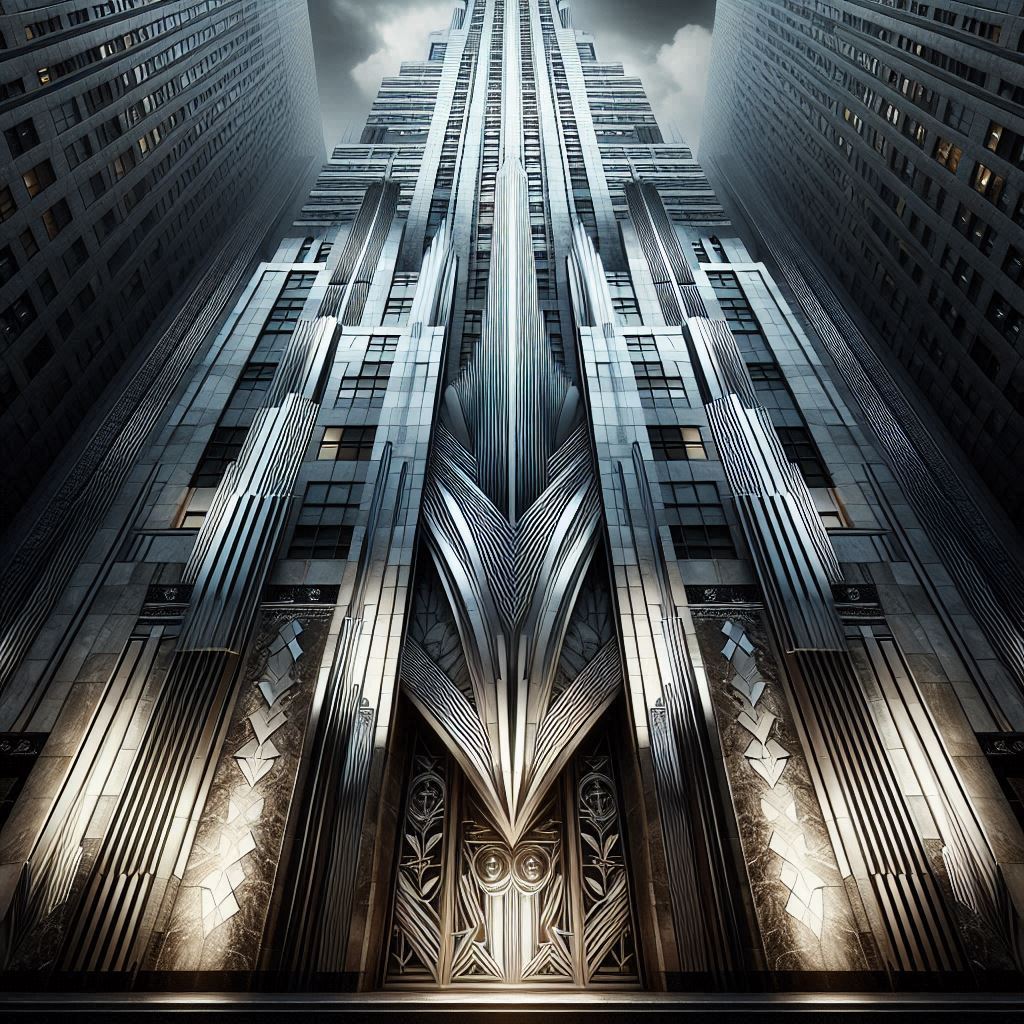
Art Deco, emerging after World War I, rejected the delicacy of Art Nouveau. It celebrated the modern world: machines, cinema, jazz, electricity.
It was a style of skyscrapers and ocean liners, of glamour and speed. It originated in Paris but flourished globally — in New York, Miami, Mumbai, Shanghai.
What Sets Them Apart?
Feature |
Art Nouveau |
Art Deco |
|---|---|---|
| Era | 1890–1914 | 1920–1940 |
| Lines | Flowing, organic, asymmetrical | Bold, straight, geometric |
| Colors | Soft, natural, pastel | Metallic, high contrast, glossy |
| Themes | Nature, women, fantasy | Industry, speed, exoticism |
| Emotion | Dreamlike, delicate | Confident, bold, energetic |
Past Meets Future: The Digital Renaissance
Both styles were deeply connected to the technologies of their time. Art Nouveau drew inspiration from lithography and Japanese woodcuts. Art Deco thrived in the age of aviation, skyscrapers, and electricity.
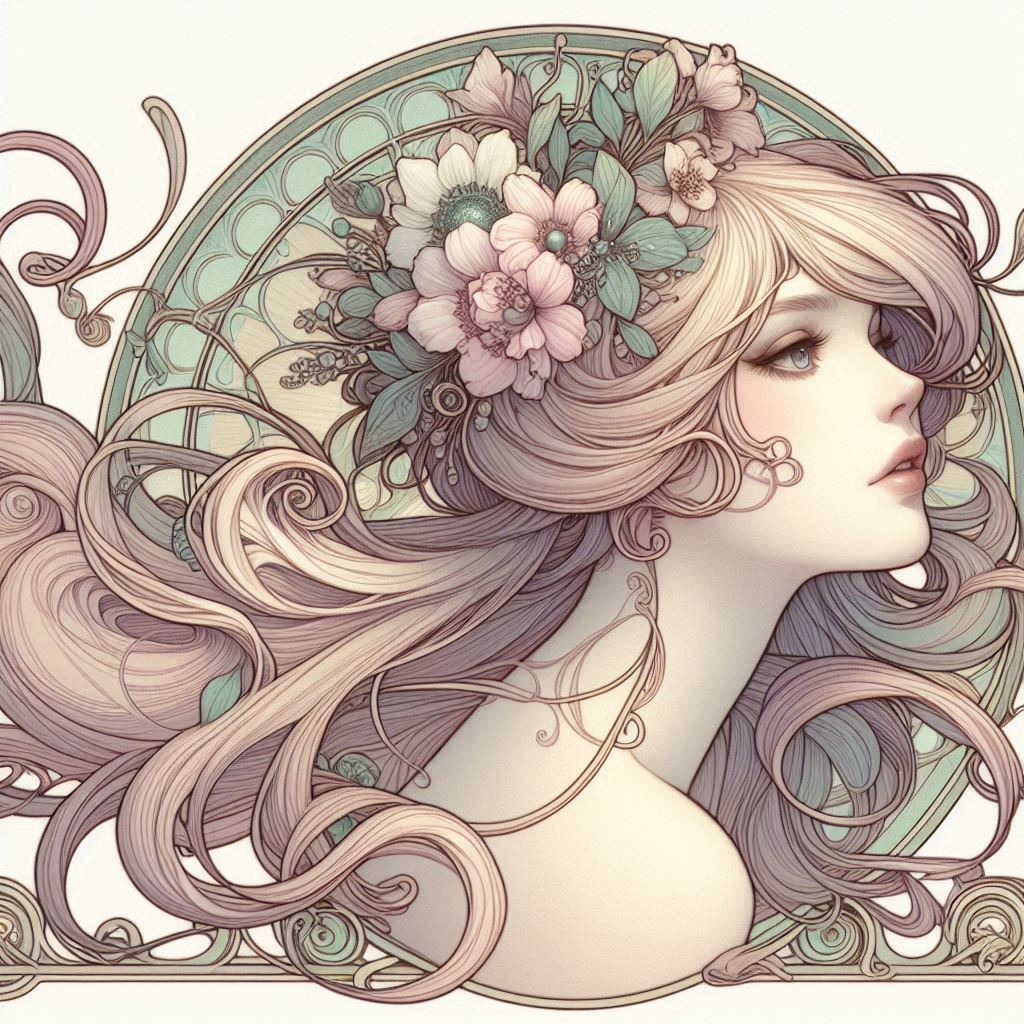
Fast-forward to today: in the 2020s, we’re witnessing another cultural shift — the rise of artificial intelligence, generative art, and digital aesthetics.
Artists and designers now use AI tools to generate images in the style of Art Nouveau or Art Deco within seconds — what once required weeks of handcrafted detail. An Alphonse Mucha-style poster or a Chrysler Building skyline can now be born from a simple text prompt.
Fun fact: One of the most popular AI art prompts in Midjourney and Bing today is: “portrait in the style of Tamara de Lempicka.” Her style has become synonymous with digital glamour.
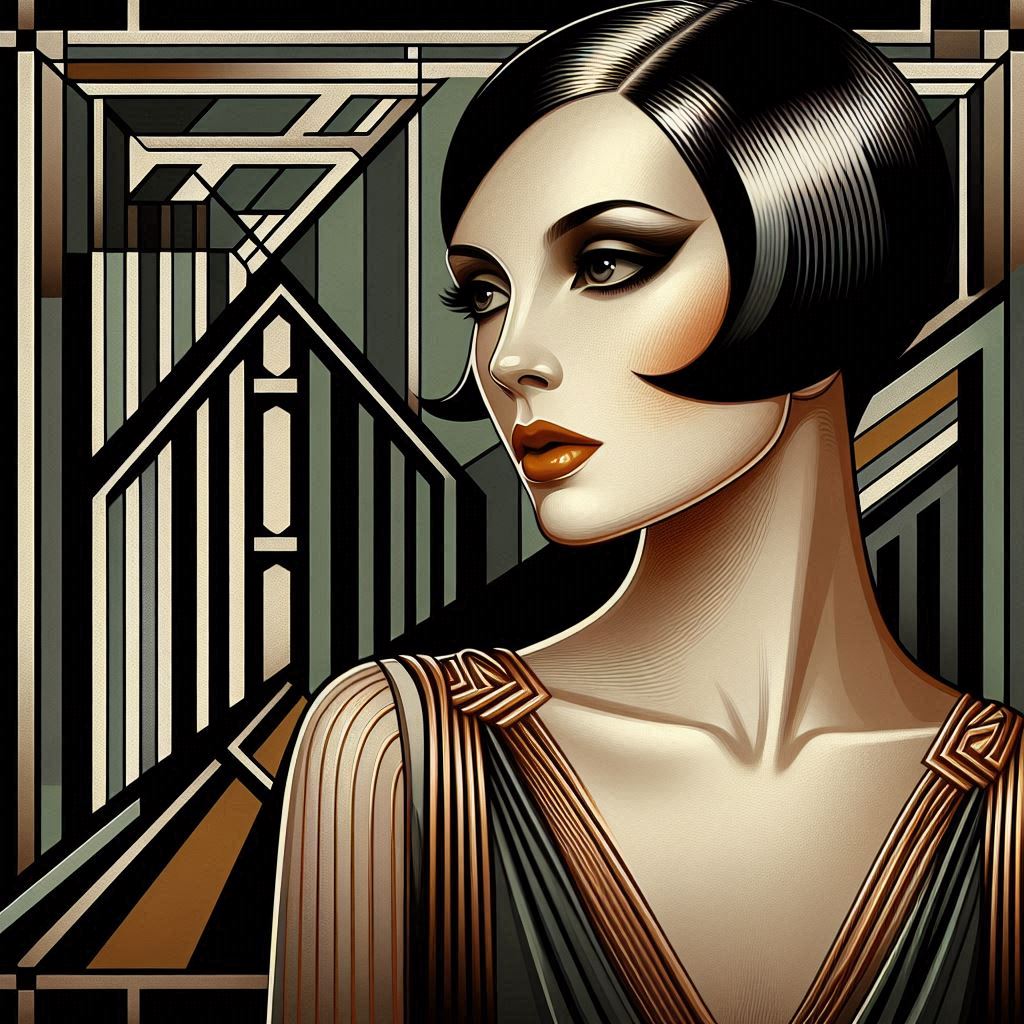
Despite being over a century old, these styles feel surprisingly modern. Why? Because both were born in times of transformation. Art Nouveau expressed the dreams on the brink of industrialization.
Art Deco captured the shine — and anxiety — of modernity. And now, with the advent of AI, we’re once again looking for a visual language to express the beautiful uncertainty of change.

